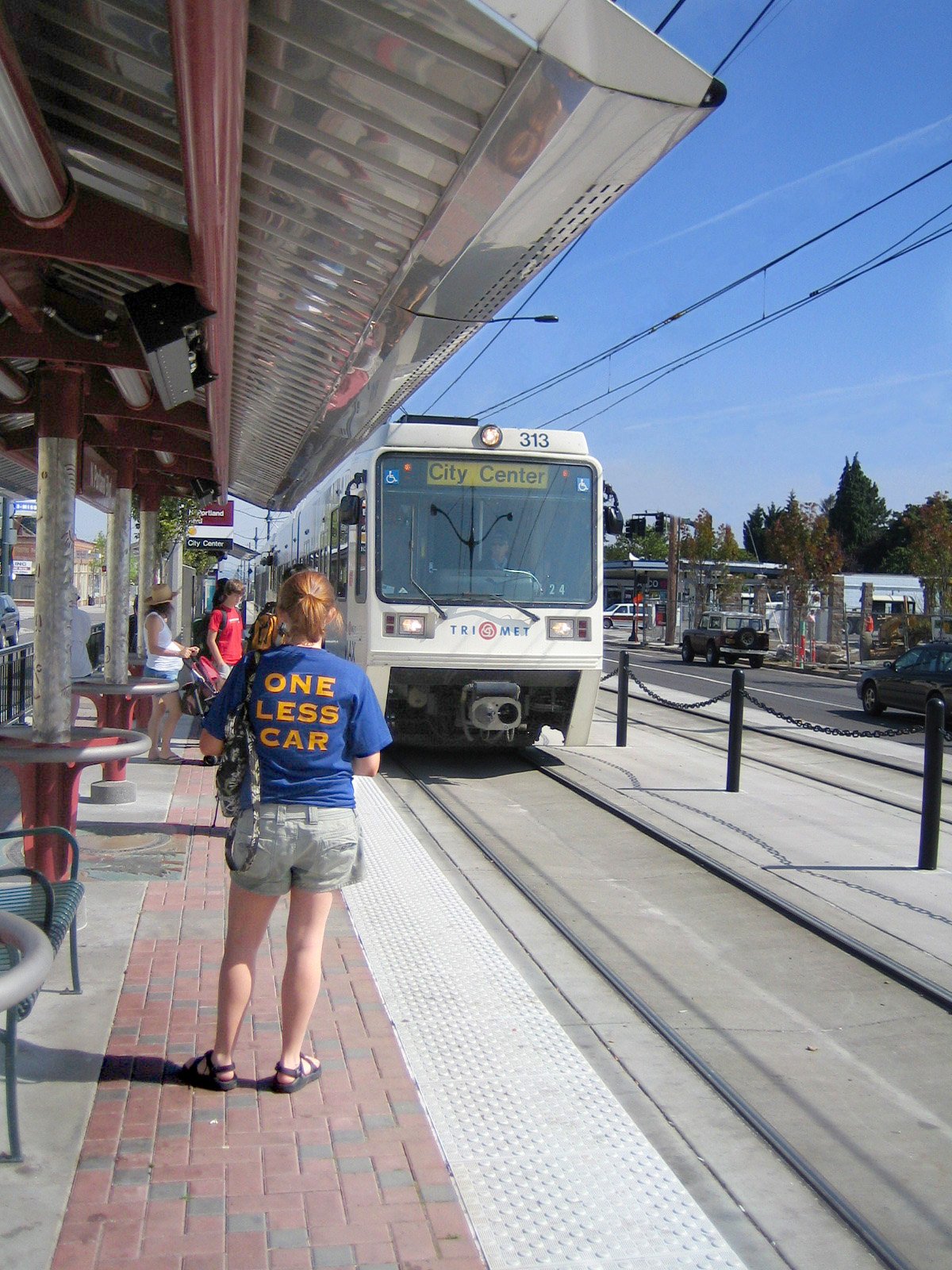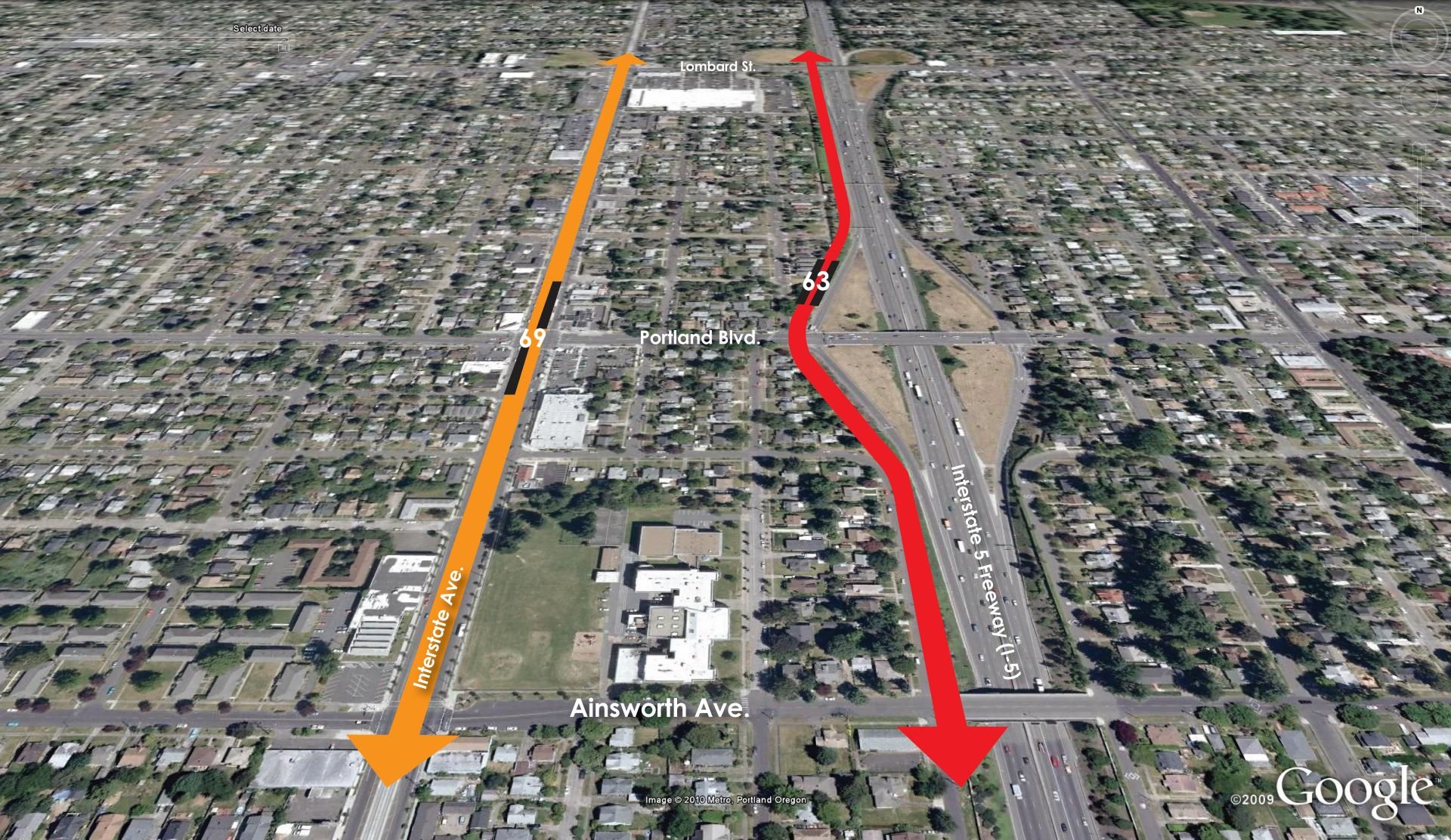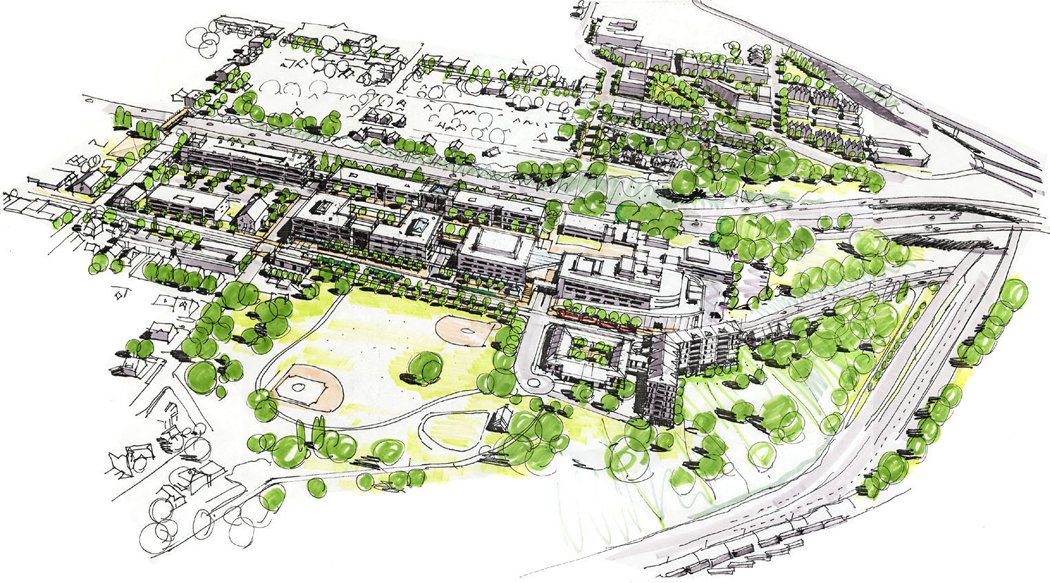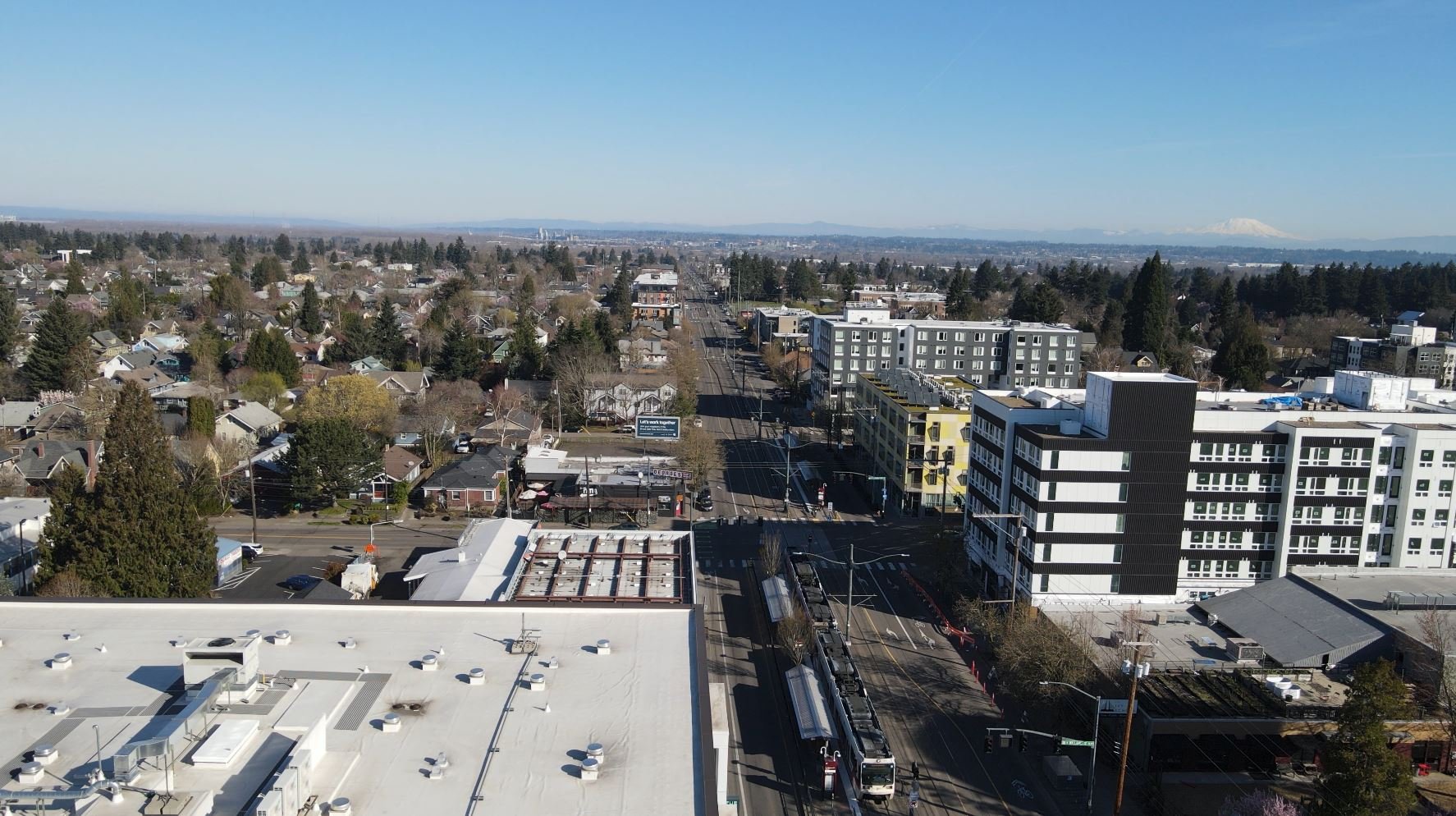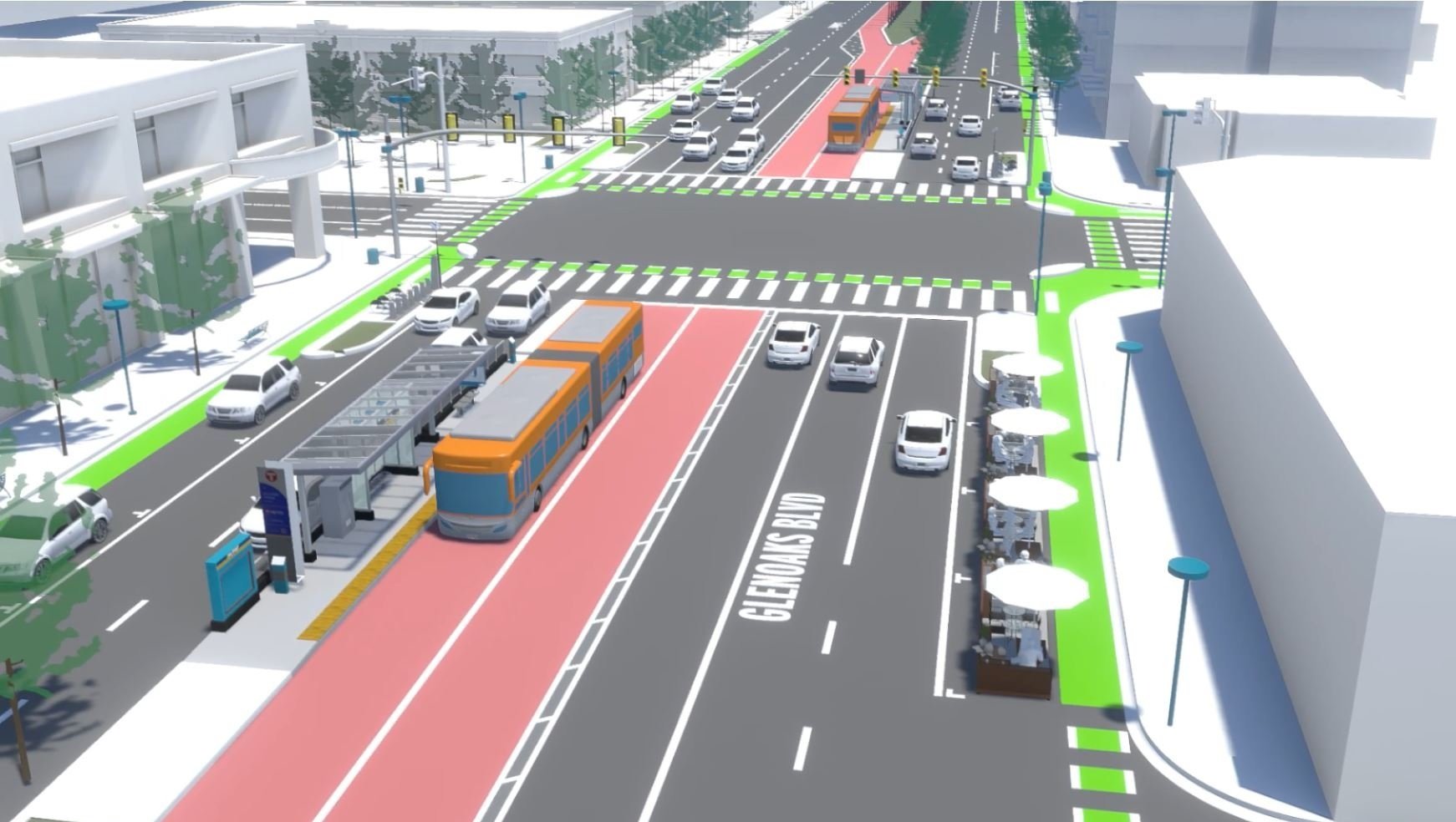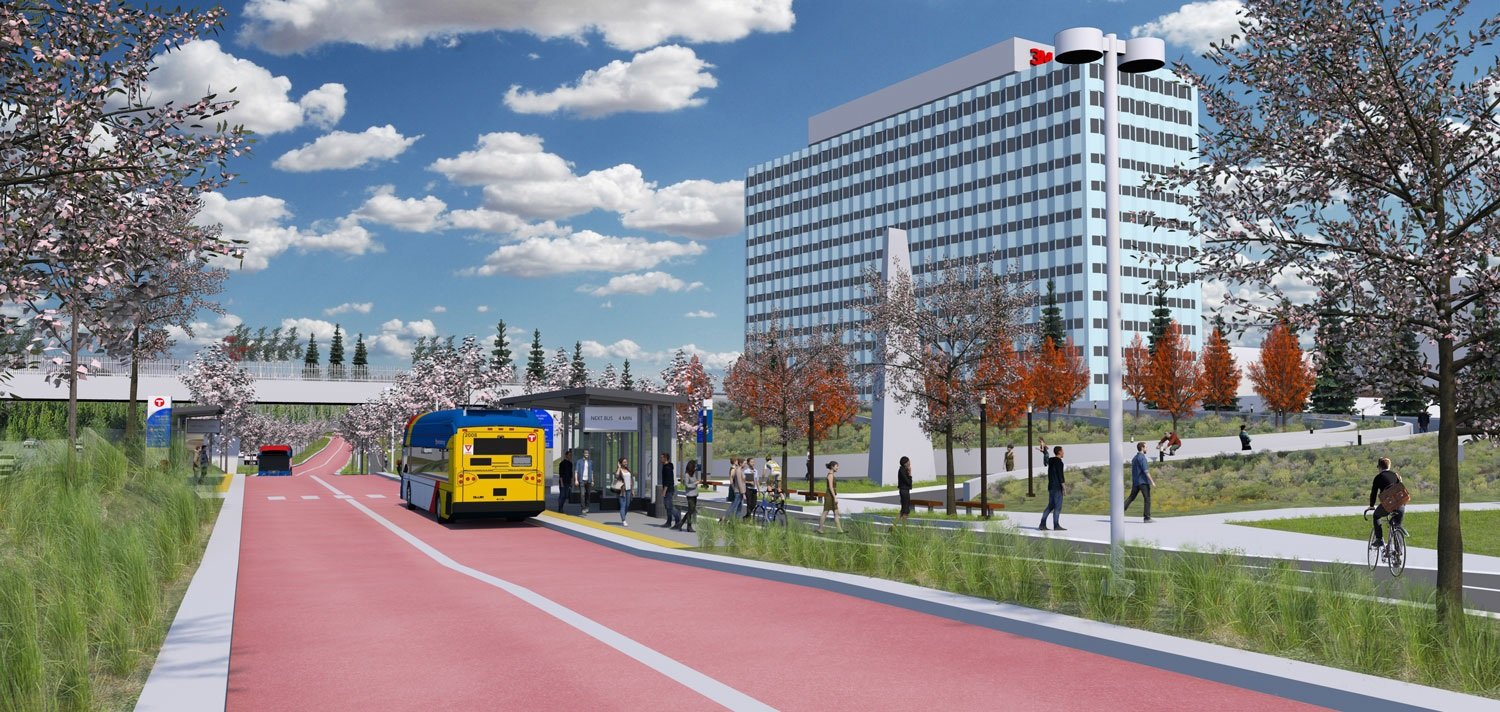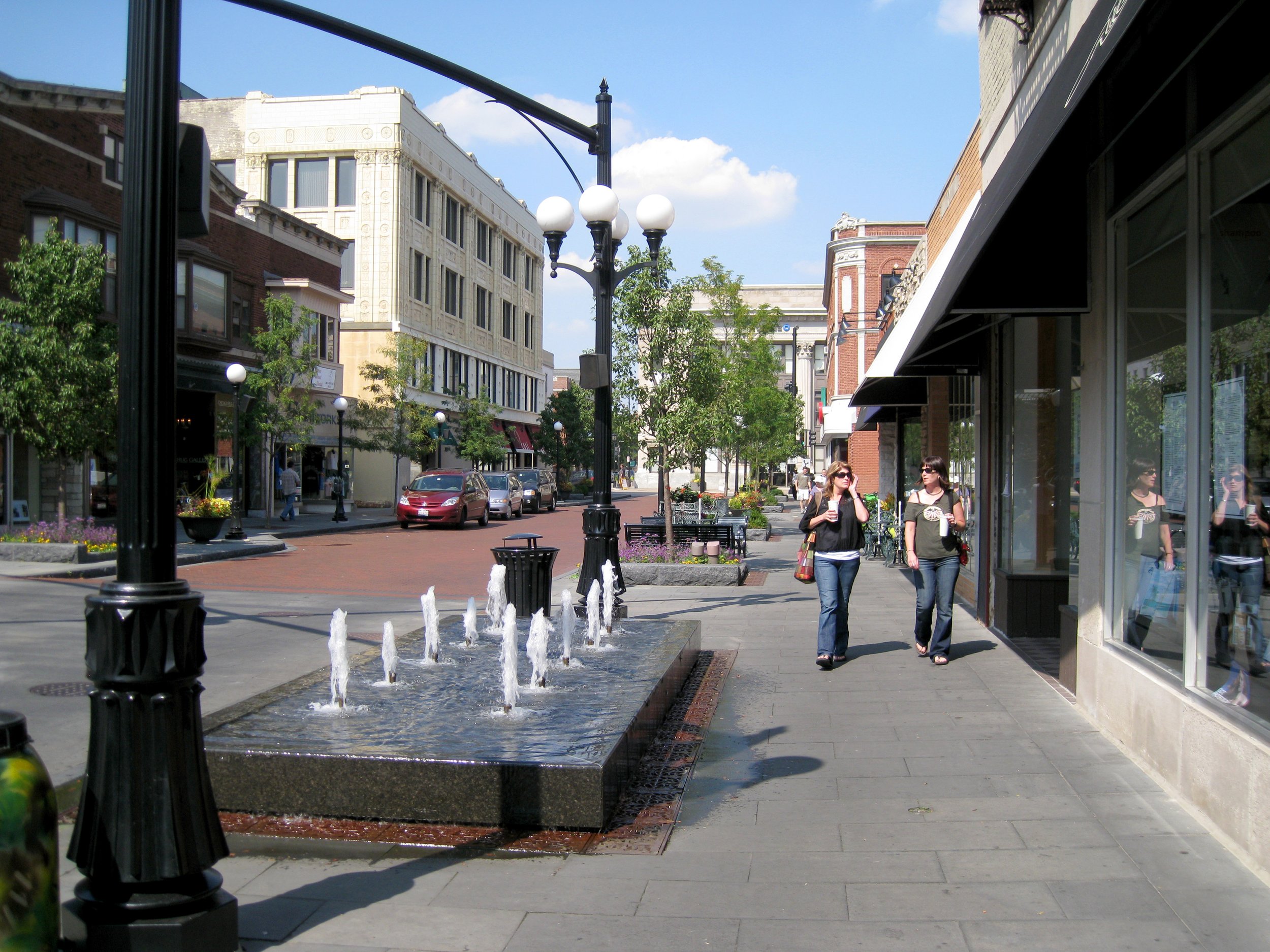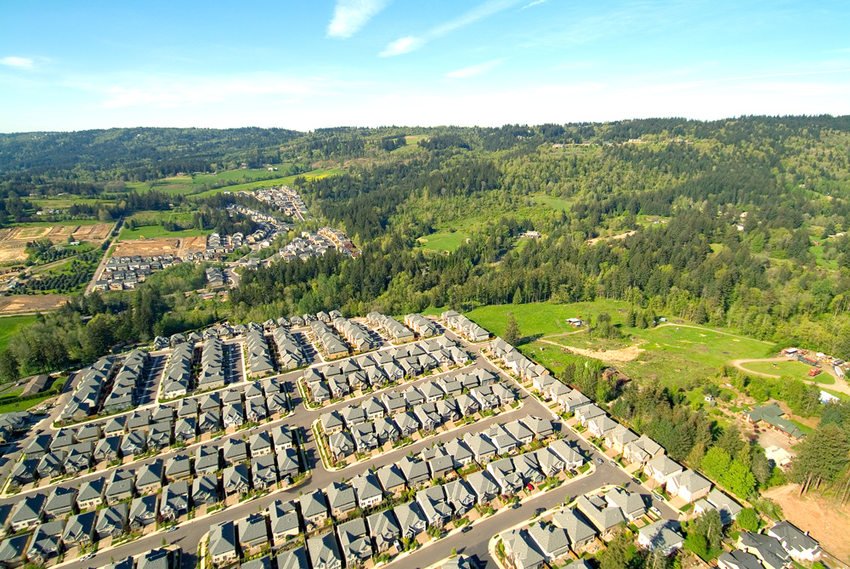Transit Systems
CRANDALL ARAMBULA TRANSIT ACADEMY (Click to Enlarge)
The ability to generate high levels of transit ridership should be the ultimate priority in selecting a transit system.
Each transit system has distinct elements and operational characteristics that make it appropriate for its specific use and context. Not all transit systems are well suited for TOD. For a system to be TOD-supportive, it must offer frequent and reliable service and have a sense of permanence. This permanence—typically determined by the quantity of fixed infrastructure—provides developers with the confidence needed to invest in the area.
Elements Of A Transit System
Each transit system has operational characteristics determined by the service area, type of transit line, and the transit mode. A transit system is comprised of the following elements:
Transit Service Areas–the centers, corridors, and regions that are served by one or more transit modes
Transit Lines–the trackway, guideway, or street on which the transit mode travels within the service area along with the associated station or stop locations
Transit Modes–the type of vehicle used and the various conditions in which they transport passengers
Transit Corridor Design
Crandall Arambula provides unique expertise in designing transit corridors and locating station platforms and associated facilities.
We have over 35 years of experience collaborating with engineering consultants transportation agencies, and communities across North America designing high-capacity transit systems. We have a unique understanding of transit systems’ operational characteristics and can help communities select the best alignments and station areas for their corridor.
Transit Systems and TOD
Crandall Arambula’s techniques and system design priorities focus on the ability to create TOD as the most critical—and often overlooked—long-term factor in increasing transit ridership. While necessary considerations such as cost, environmental impacts, and travel time, are often the most prioritized considerations by public agencies and stakeholders when a transit system is selected, the ability to generate high levels of transit ridership should be the ultimate priority.
We design systems through the lens of increasing ridership, reducing motor vehicle miles traveled, and increasing TOD potential. Moreover, our design work has increased the vitality and livability of station areas and corridor alignments.
Selecting A Transit Line
A range of transit line options may be identified that connect two destinations. Not all line options are equal and each may accomplish a different objective, such as lower construction cost or greater TOD potential. When identifying line options and selecting a preferred line, the following factors should be considered:
TOD potential
Ridership potential (areas and populations served)
Land availability
Land use and transportation system impacts
Environmental impacts
Cost
Light Rail Transit (LRT)
Denver, CO - alameda station
Light rail is an essential mode linking metropolitan downtowns and centers.
Light rail transit often provides daily commute service for area residents. To meet this potential, light rail alignment and stations must be located to support, rather than obstruct, the surrounding land uses and circulation. Proper location can also create a benefit for transit agencies by reducing maintenance and construction costs and improving operations.
Crandall Arambula has saved transit agencies millions of dollars by adjusting planned LRT station locations to improve transit operations, reduce construction costs, create safe and direct station access, and maximize TOD potential.
REPRESENTATIVE PROJECTS
Portland, Oregon
Memphis, Tennessee
Tukwila, Washington
Edmonton, Alberta
Aurora, Colorado
Denver, Colorado
Redmond, Washington
Bellevue, Washington
Hillsboro, Oregon
Robbinsdale, Minnesota
Hopkins - Minnetonka, Minnesota
Streetcar Transit
The best conditions for streetcar development in downtown areas typically involve a combination of factors prioritizing efficiency, accessibility, and sustainability.
Population Density: Downtown areas with high population density provide a large pool of potential riders, making streetcar systems more economically viable and ensuring consistent ridership.
Mixed Land Use: Streetcars thrive in areas where there's a mix of high-density residential, street-oriented commercial, and cultural amenities within close proximity. This diversity of destinations encourages people to use the streetcar for multiple purposes throughout the day.
Pedestrian-Oriented Infrastructure: Streets designed for pedestrians with wide sidewalks, pedestrian crossings, and pedestrian-friendly infrastructure are ideal for integrating streetcar lines. Accessibility to and from streetcar stops is crucial for encouraging use.
Limited Automobile Traffic Conflicts: While streetcars can coexist with automobile traffic, minimizing congestion and prioritizing dedicated lanes or rights-of-way for streetcars improves their reliability and speed, making them more attractive to commuters.
Connectivity with Other Transit Modes: Integration with other modes of transportation such as light rail, buses, and bike lanes enhances the overall accessibility of the streetcar system, providing seamless connections for commuters.
REPRESENTATIVE PROJECTS
ESCO Master Plan Streetcar Concepts, Portland, OR
East End District Streetcar Concepts, Lake Oswego, OR
Downtown Plan Streetcar Concepts, Lincoln, NE
Harbor Dr. - Naito Pkwy Redevelopment Area Streetcar Concept, Portland, OR
Port of Astoria Master Plan Trolley Concept, Astoria, OR
Streetcar Alignment Alternative Concepts, Omaha, NE
Bus Rapid Transit (BRT)
BRT can be a cost-effective alternative to rail transit.
Successful BRT replicates the essentials of a light rail system—high-quality vehicles, fixed stations, and dedicated or exclusive guideways for the entirety of the system. Well-designed BRT systems can support TOD around stations. BRT systems that include travel lanes shared with automobiles or that rely on signal prioritization or jump lanes will not achieve full ridership potential.
Crandall Arambula collaborates with transit agencies, local governments, engineering consultants, and local stakeholders to maximize the benefits of bus rapid transit investments. We provide BRT guideway, station platform, and station walking and biking infrastructure conceptual design, design revisions, and design review to ensure that BRT investment leverages public benefits including increased transit-oriented development, greater transit ridership, and improved livability.
We provide similar services for high-frequency service ‘Rapid Bus’ corridors where ‘true’ BRT cannot be constructed, but elements of a BRT corridor such as bus signal prioritization and enhanced station platforms are constructed.
REPRESENTATIVE PROJECTS
Metro Gold Line BRT Corridor, Ramsey & Washington Counties, MN
Rush (Purple) Line BRT Corridor, Ramsey County, MN
North Hollywood to Pasadena BRT Corridor (Glendale segment), CA
EmX- Emerald Line BRT (Downtown and Gateway District), Springfield, OR
Overlake Village RapidRide Bus Improvement Concepts, Redmond, WA
Wenatchee Boulevard Rapid Bus Improvement Concepts, Wenatchee, WA


